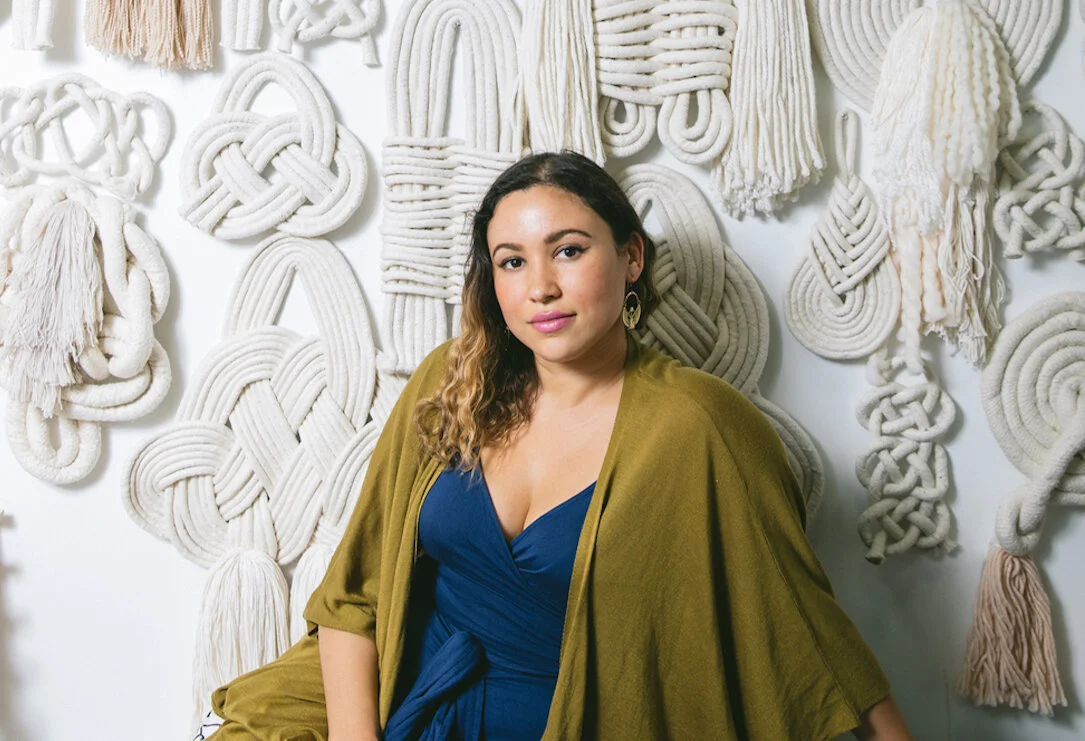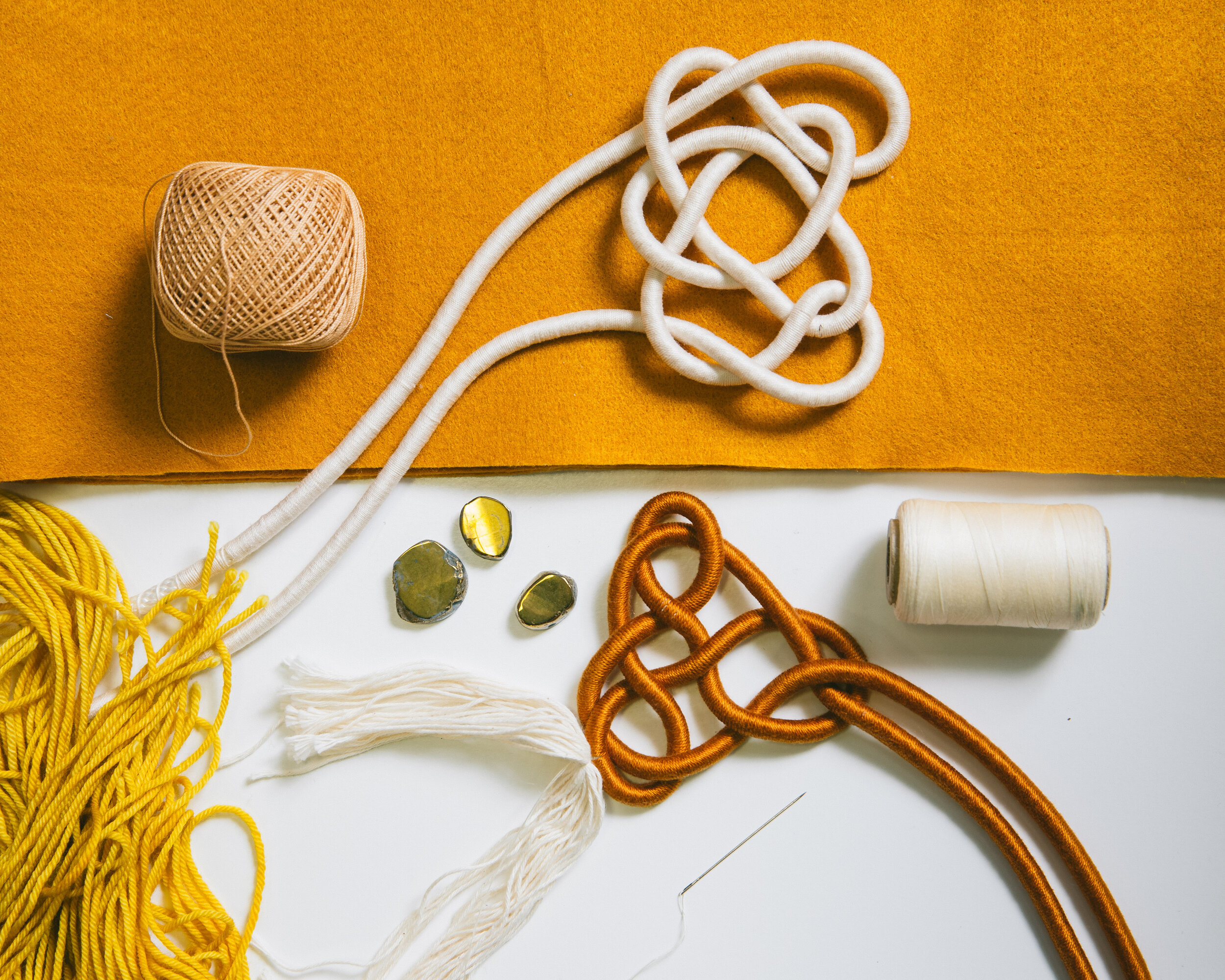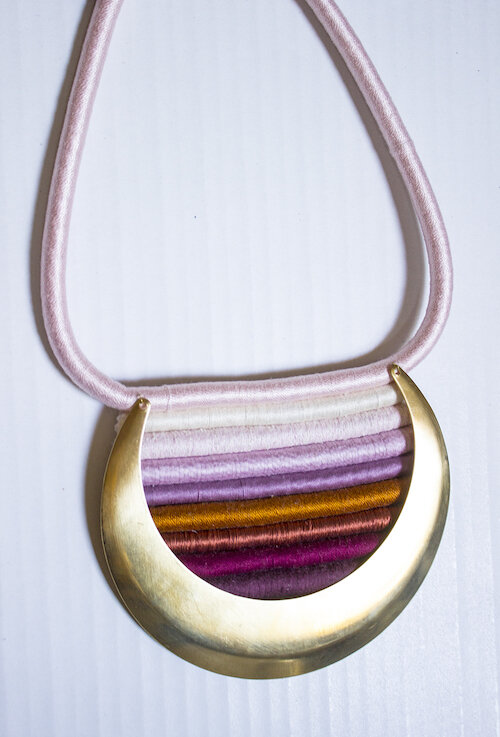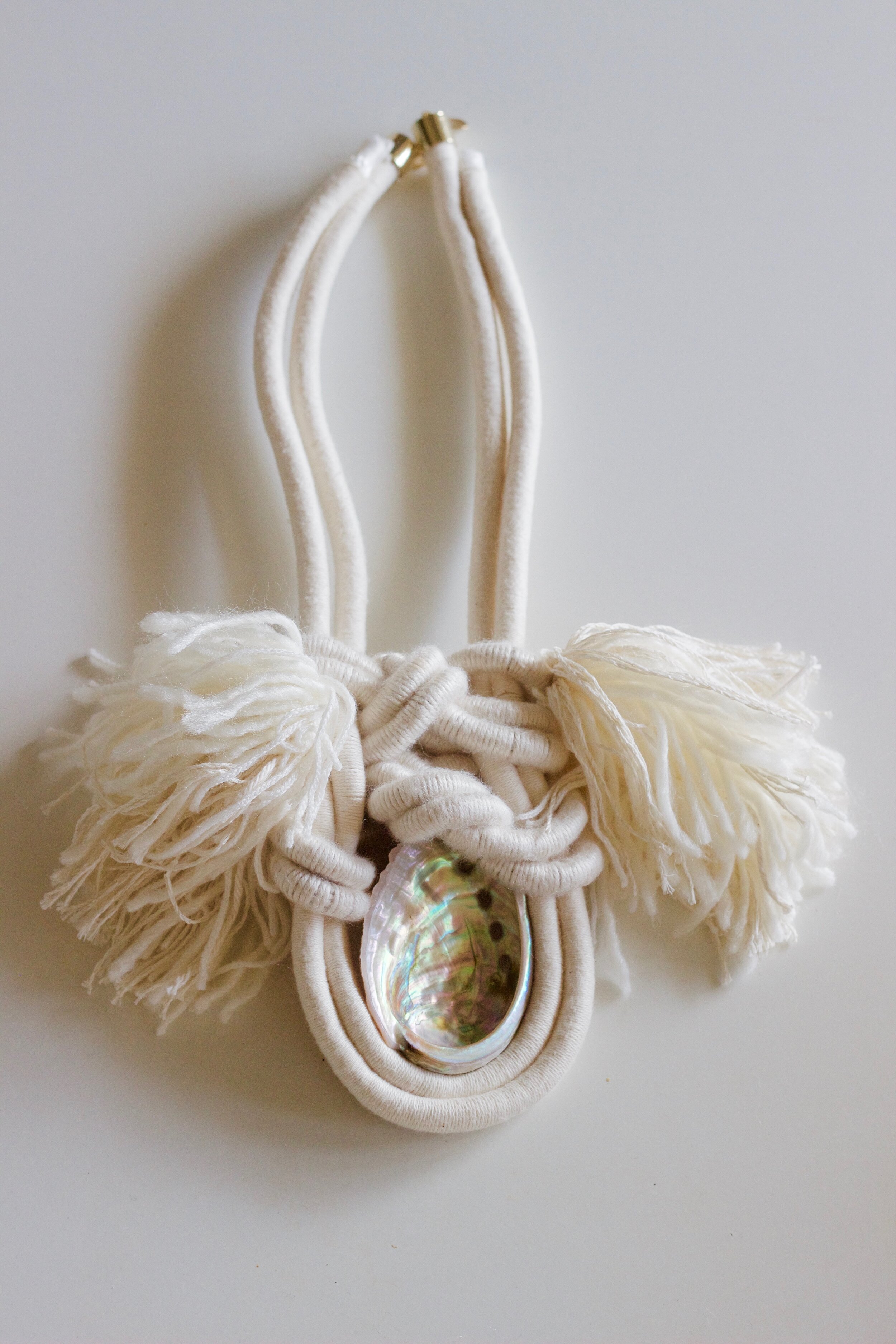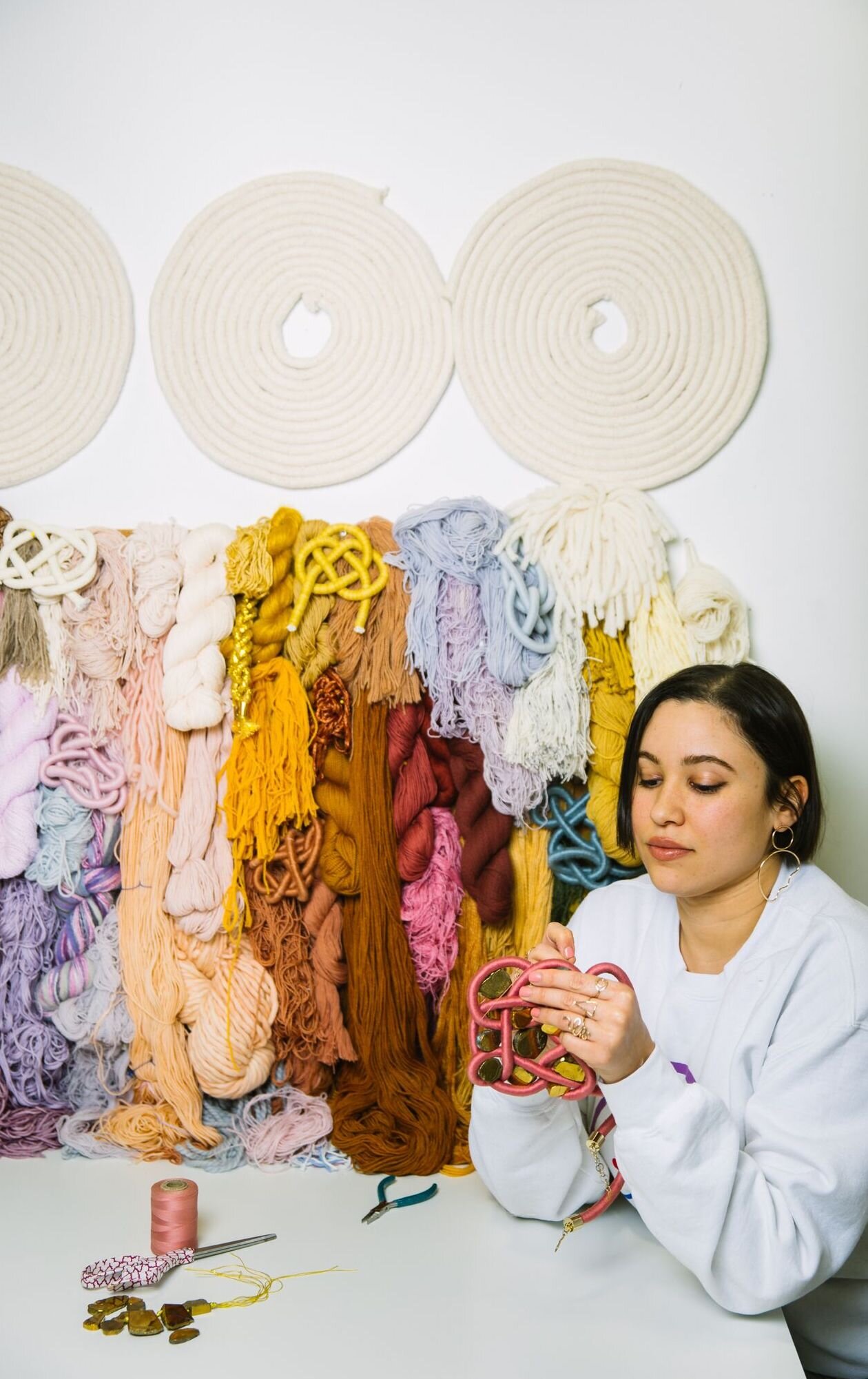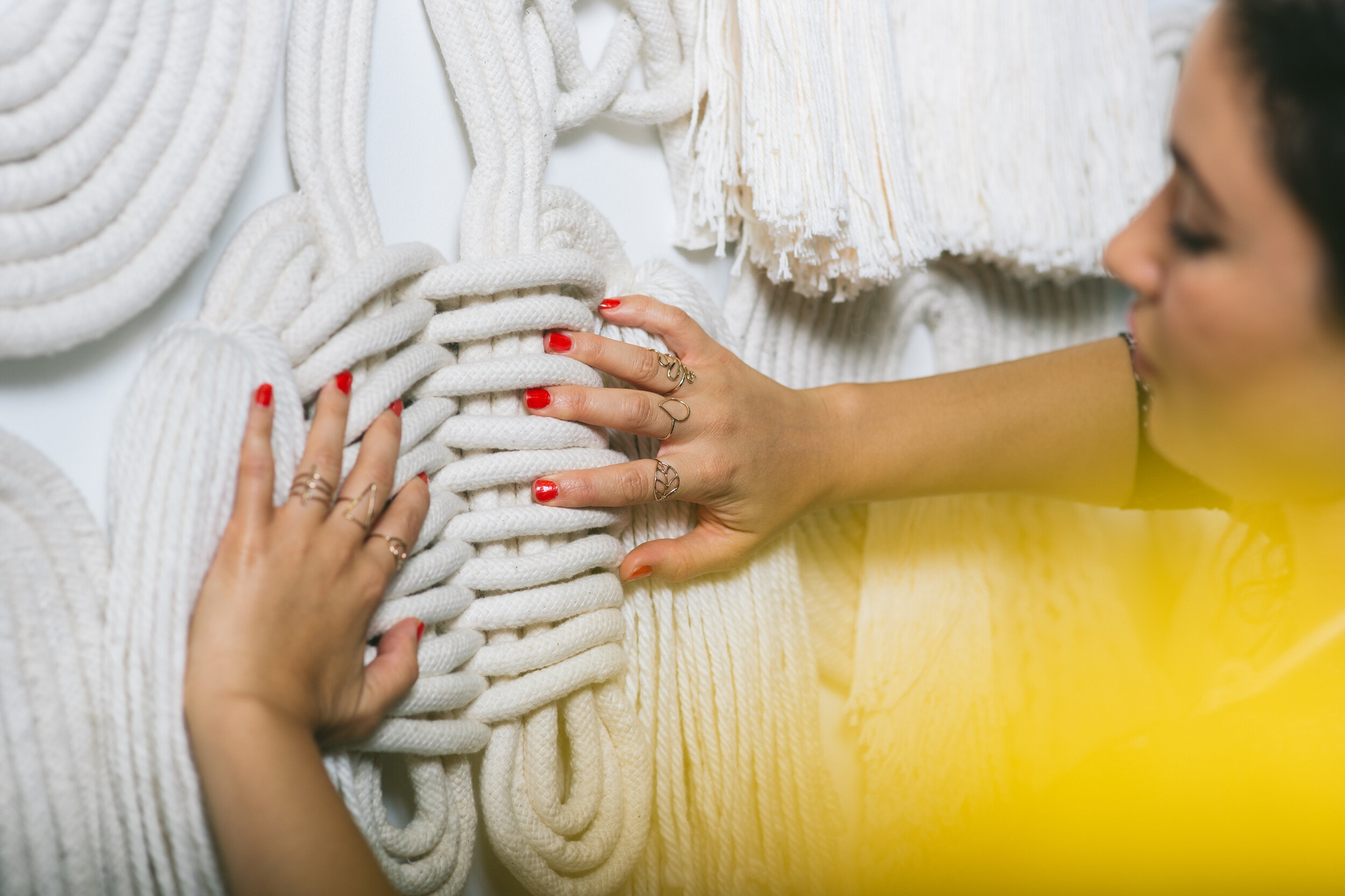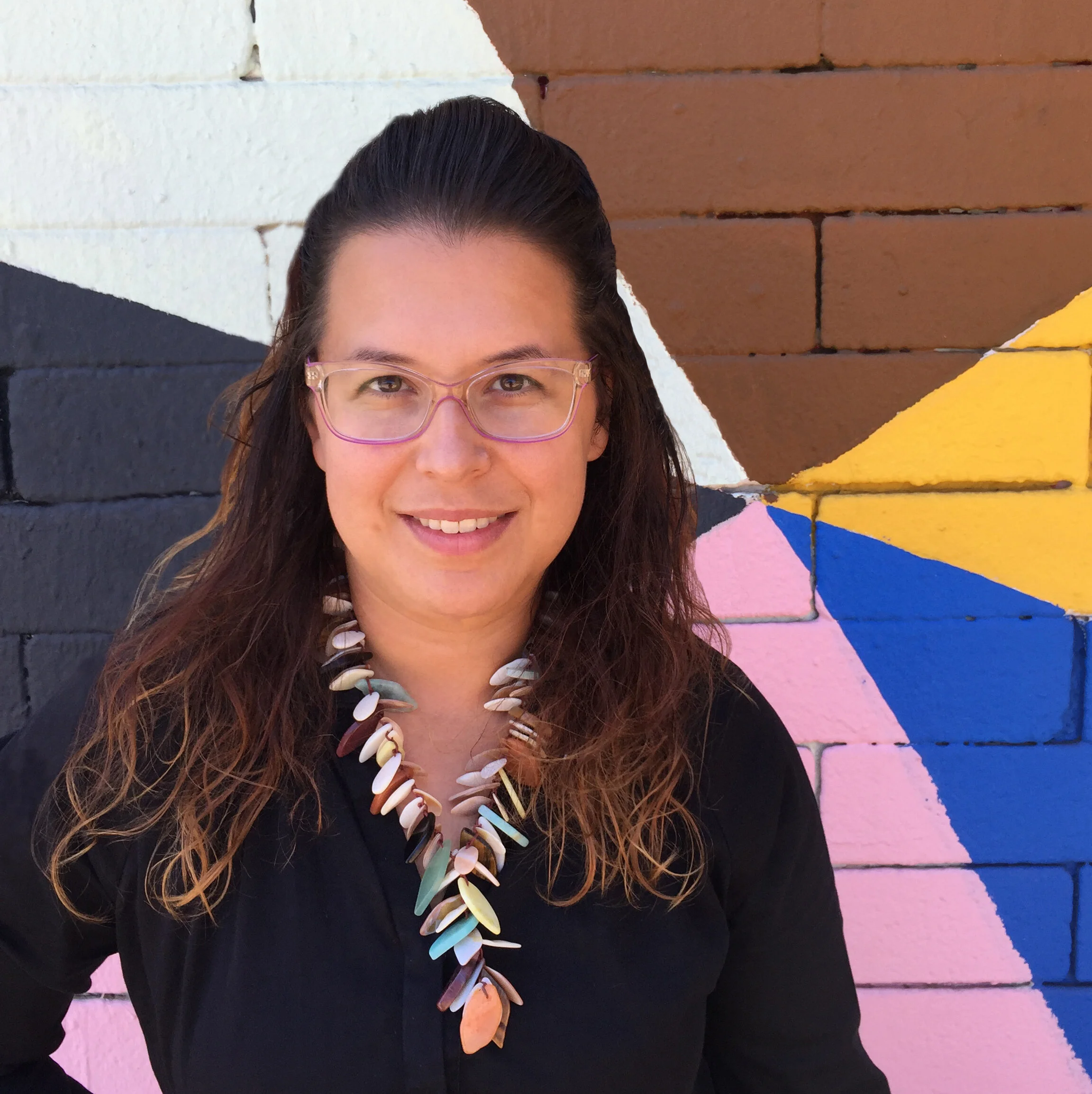Lise Silva-Gomes: The Human Behind the Art
The Fiber Artist on Craft, Ethics and Tradition
Oakland’s Lise Silva-Gomes creates strong, sinuous works of fiber art. Whether the piece is a wall hanging or wearable, it carries a feeling of ancientness with it — a sense of ceremony and otherworldliness.
The path to Silva-Gomes’ voice and medium was circuitous. And, once she found it, she learned that it takes as much work to protect it and keep it whole as it does to create the work. She talked with Outer Voice about the importance of risk, ethics and showing the human behind the art.
“Fiber arts don’t get their due within the art world because fiber arts are a little bit more marginalized — because craft is more marginalized and a traditionally feminine medium.”
—Lise Silva-Gomes
The Path to Voice
Although she recognized her passion for art early on, Silva-Gomes chose to study sociology, earning her bachelor’s degree and moving on to a PhD program. While there, she began a slow return to art, auditing classes and broadening her skills.
Post-grad school, Lise found herself working retail and haunting thrift shops, where she stumbled upon vintage macrame books and patterns, sparking an interest in fiber arts that let her to her medium.
“I wanted to try it,” she explains. “But I have a really hard time — and this is probably what led to where I am now — I have a really hard time following tutorials. I really want to go rogue and go off script and do my own thing. And so I started to follow these tutorials and then at some point, I would get bored or tired of it or just not want to follow directions and I would just experiment. So I started knotting all of these things.”
GALLERY
Digging deeper into the history of textile art, she learned about artists like Barbara Chase-Riboud, Kaisik Wong, Janet Lipkin and Claire Zeisler. These artists, like many before and after them, worked to elevate textiles and fiber to a high art medium. It’s always been a struggle. “Fiber arts don’t get their due within the art world because fiber arts are a little bit more marginalized,” Silva-Gomes says. “Because craft is more marginalized and a traditionally feminine medium.”
Silva-Gomes understood that craft tradition and fine art live on the same continuum. She found a meditative, grounded practice in knotting that allowed her to find a personal connection between tradition and contemporary art.
This led Lise to the first phase of her work, Sacred Knots. “To me, Sacred Knots was about knotting as one of the most primitive and most basic both functional and art forms that exist in humanity around the world,” she says. “It wasn't a separation between functional item and art, as as we often know in a very Western, modern context. Form and function and aesthetics were all one. So Sacred Knots was my attempt to say, ‘we should value this little really small practice that is so essential to being human that we've all taken for granted.’”
From wearables to display pieces, Silva-Gomes’ beautiful, accessible works gained her an enormous following and, as a result, some overzealous emulators. From individuals selling on Etsy to Urban Outfitters, her work was soon being plagiarized for profit.
As social media grew, so did the opportunity for appropriation and plagiarism on an incredible scale that’s nearly impossible to track. As Silva-Gomes dealt with plagiarism issues from individuals to corporations, she understood that the blurry spaces between tradition, proprietary cultural knowledge and commerce are harder to navigate than they may seem. When are we stealing from a culture? From an artist? Where is the line between inspiration and theft? This is how the idea for Craft & Practice: Meditations on Creativity & Ethics was born.
Little ’Zine, Big Message
Craft & Practice: Meditations on Creativity & Ethics is a brief, powerful work that’s applicable to any artist in any medium. In it, Silva-Gomes tackles the personal responsibility of the artist in honing an authentic craft and in learning the distinctions between cultural exchange and appropriation. It’s a humbling, useful guide that includes meditative exercises and tips for students, teachers and artists of all stripes.
“It’s very focused on providing a guidebook for how to have a more community-grounded, responsible practice,” Silva-Gomes explains. “It brings up notions of ethics and the dialogue we should have about respecting each other’s discoveries in practice.”
This ’zine was her first foray into publishing, but her next written work is a major new step in her career and in her direction.
Book and Next Steps
This fall, Roost Books (an imprint of Penguin Random House) will publish Sacred Knots: Create, Adorn and Transform Through the Art of Knotting. This is not only Lise’s first commercially published work, it also marks a new phase in her own practice.
“I didn’t love feeling like my work was only knots,” she says. “I wasn’t comfortable with that. I felt like there were other things I wanted to do, and for my work to encompass more things. And I also felt that we’re in a time where people are having a harder time collecting a lot of physical objects. A lot of us live in smaller spaces, a lot of people are trying to be more conscious about their consumption. I didn’t want Sacred Knots to feel like physical clutter or items. I wanted it to be about practice.”
Gomes is ready to explore work beyond Sacred Knots. “For me, it felt like a natural choice for it to become a teachable practice that people can enjoy by doing. At the end of the day, I felt like I’m ready to let this go into the world.”
Want to learn more? Join the Outer Voice Not-So-Secret Society for an extended article from this interview, plus other great benefits.

